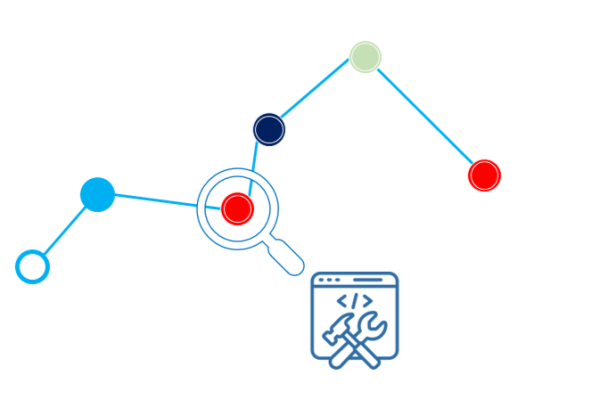What is Versioning? Why is it important?
Versioning is a process of tracking changes to a product over time by assigning each change a unique identity. It is an important tool for managing products and ensuring that everyone is working on the same version. It is used in a variety of industries, including software development, manufacturing, and document management. Versioning helps us trace all changes that were made while creating the project.
For example, a development team working on a website called “Thinknyx Technologies” might create version 1 with the home and contact us pages, and then create version 2 with the addition of blog and conferences pages.
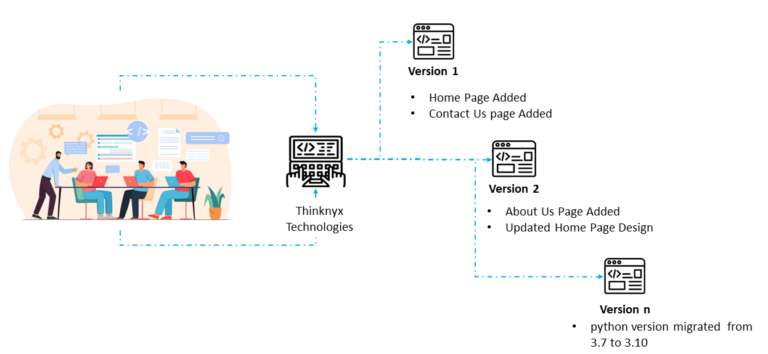
What are the Challenges Before Versioning?
Collaboration: Without Versioning, simultaneous collaboration on code becomes challenging, leading to conflicts and coordination issues among developers.
Data Loss Risk: The absence of versioning increases the risk of data loss, making it difficult to recover from mistakes or revert to a stable state.
Difficulty in Tracking Changes: Before implementing versioning, keeping a comprehensive record of code changes becomes an impossible task, leading to a lack of visibility into the evolution of the codebase over time.
Code Stability: Before Versioning, making direct changes to the code can lead to instability, making it challenging to maintain a consistent and reliably functioning code.
What is a Version Control System (VCS)?
A version control system is a tool that helps developers to track changes in their files over time. It allows them to recall specific versions of their files whenever they want and eliminates the need to create separate folders for each version.
Before version control systems, developers had to manually track code changes, which was time-consuming and error-prone. This could lead to conflicts and data loss. Version control systems solve this problem by storing different versions of code in a central location, so developers can collaborate and track changes more easily.
Version control system follows the 4 W’s framework i.e., who, when, what, why.
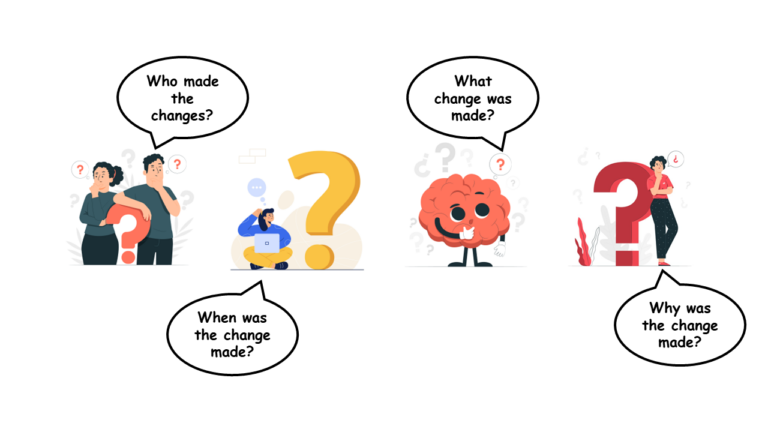
In simpler terms, version control systems make it easier for developers to keep track of their code and work together on projects.
Types of Version Control Systems
There are mainly two types of Version Control Systems:
- Centralized Version Control Systems (CVCS)
A centralized version control system (CVCS) is a system where there is a single central repository that stores all the files and their various versions. Developers check out files from the central repository to work on them and then check them back in when they are finished. The commonly used centralized version control systems are Perforce, SVN, and TFS.
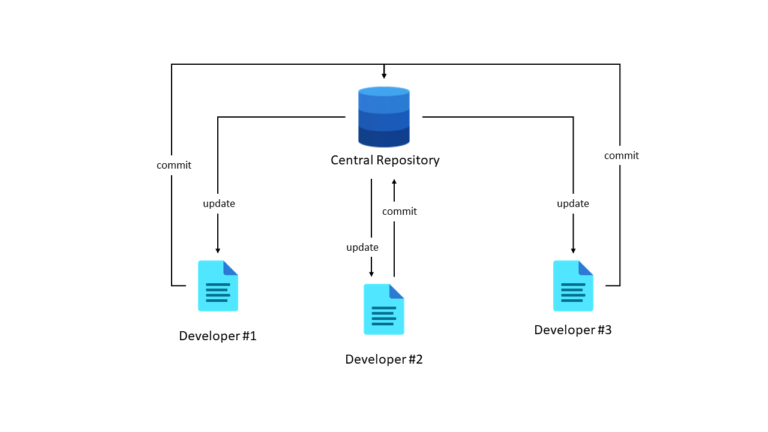
The above Figure shows a central repository that stores all versions of the code. Developers can commit the changes to the repo and get updated code from the repo.
- Distributed Version Control Systems (DVCS)
A distributed version control system (DVCS) is a type of version control system that stores a complete copy of the codebase on each developer’s machine. This makes it easy for developers to work on the codebase even if they are offline, and to merge changes from other developers by pushing and pulling changes in the main repository on a remote server.
The most common distributed version control systems are Git, Mercurial, and Bazaar. Git is the most popular DVCS, and it is used by most of the developers around the world.
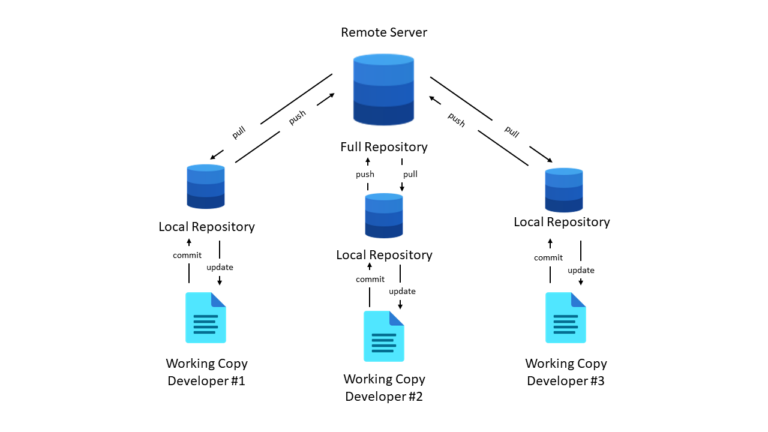
The above Figure shows each developer having a full copy of the repository on their local machine. They can work on changes offline and push them to the remote server when ready. Other developers can pull the changes from the remote server to their local machines.
Key benefits of using a version control system include:
- History Tracking and Audit Trail: Every change made to the code is tracked, providing a clear audit trail VCS maintains a detailed history of code changes, which allows you to track who made what changes and when.
Example: You can identify when a critical bug was introduced and by whom, facilitating quicker debugging and accountability.
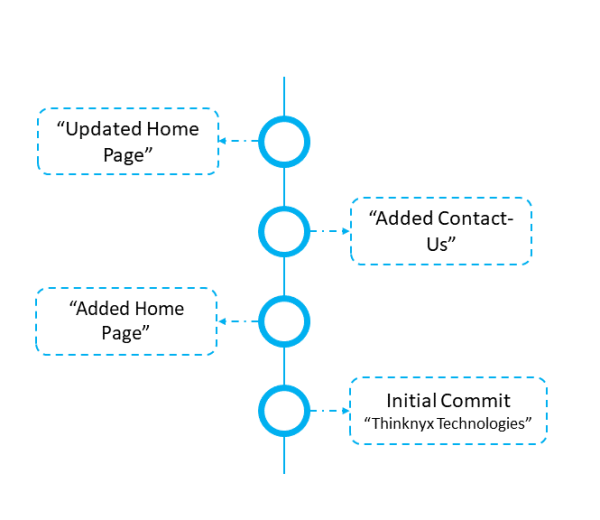
- Collaboration and Parallel Development: Multiple developers can work on the same project simultaneously without interfering with each other’s work. Teams can work on different features or bug fixes in parallel, speeding up development.
Example: A team of developers can work together on different features of a web application. Each developer can create and merge branches independently. One team focuses on improving the user interface while another works on optimizing the database queries.

- Branching and Merging: VCS allows for the creation of branches, which are separate lines of development. Developers can work on features or bug fixes in isolation and later merge their changes back into the main codebase.
Example: You’re developing a mobile app, and you want to add a new feature. You can create a branch to work on this feature without affecting the stable version of the app.
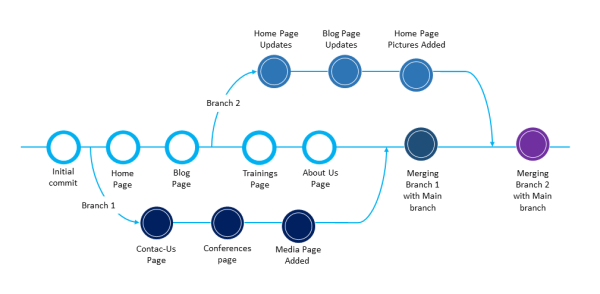
- Backup and Recovery: VCS enables developers to create isolated branches for new features or bug fixes, preventing conflicts with the main codebase until ready.
Example: You’re working on a new website, and you make a change to the code that accidentally deletes an important file. With a VCS, you can easily recover the deleted file by rolling it back to a previous version of the codebase.
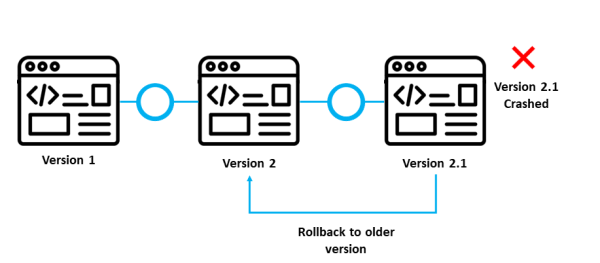
- Traceability: VCS provides traceability, helping you understand the evolution of your codebase over time.
Example: You can see how a software project has evolved from its initial version, making it easier to understand design decisions and architectural changes.
